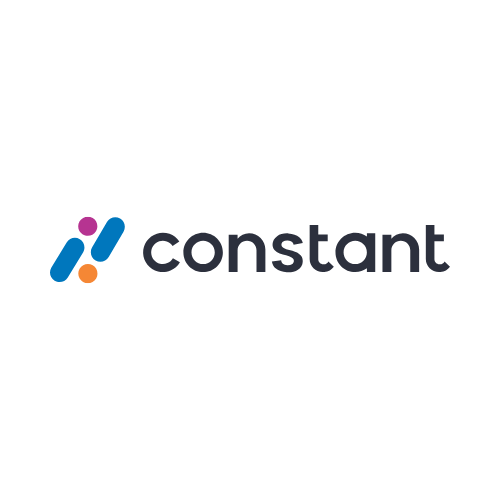By Catherine York Powers, CEO, Constant
In a time of intense economic uncertainty, credit unions are facing a critical crossroads: modernize or risk serious portfolio erosion. The cushion of pandemic-era government stimulus has evaporated, leaving financial institutions exposed to mounting delinquency trends. With federal shutdown threats looming, agency staffing shrinking, and markets vibrating with unpredictability, credit unions are navigating a landscape that demands quick, strategic adaptation.
Recent Fitch Ratings data reveals concerning trends that underscore this challenge: auto loan 60+ day delinquencies are approaching 6% with annualized net losses climbing to 8-9%, while credit card gross chargeoffs are trending upward to nearly 6% with 60+ day delinquencies also rising. These metrics represent a significant deterioration compared to pre-COVID levels, when auto loan delinquencies typically ranged between 3-4% and credit card chargeoffs hovered around 3.5%.
The severity of these delinquency trends is forcing credit unions to increase loan loss provisions, threatening net interest margins already strained by economic uncertainty. Many credit unions are now allocating capital to loan loss reserves at levels not seen since the early recovery period of 2010-2012, directly impacting their bottom lines and ability to serve members.
The Data-Backed Urgency
The current lending environment demands immediate action. The most recent Fitch Ratings indices reveal concerning patterns that directly impact credit union financial health:
- Auto Lending Stress: The Auto Loan Annualized Net Loss (ANL) Index shows losses reaching 8-9%, significantly higher than previous years. Simultaneously, the Auto Loan 60+ Delinquency Index approaches 6%, indicating a growing segment of troubled assets requiring intensive management.

- Credit Card Portfolio Deterioration: Credit card portfolios show similar stress, with the US Retail Gross Chargeoff Index climbing toward 6% and 60+ Day Delinquencies trending upward after years of relative stability.
These metrics translate directly to balance sheet pressure. As delinquencies rise, credit unions must increase their loan loss reserves according to their CECL (Current Expected Credit Loss) models and historical loss rates, which directly impacts earnings and capital ratios. The exact reserve requirements vary by institution, portfolio composition, and economic factors, but the financial impact is unmistakable. The operational burden of managing these troubled assets through traditional manual channels further compounds the financial strain, as collection costs rise in proportion to delinquency volumes.
The Cost of Manual Hardship Processes
Traditional hardship assistance programs – requiring phone calls, documentation submission, and lengthy review processes – magnify these financial challenges in multiple ways:
- Delayed Intervention: By the time members navigate manual hardship channels, their financial situation has often deteriorated further, decreasing the likelihood of successful resolution. According to The Federal Reserve Bank of New York's Household Debt and Credit Report, each 30-day progression in delinquency status significantly reduces ultimate cure rates.
- Resource Drain: Collections and loss mitigation teams become overwhelmed managing growing delinquent account volumes, increasing personnel costs precisely when margins are already compressed.
- Higher Roll Rates: Without frictionless early intervention options, accounts that could have been remedied with simple short-term solutions (like automated payment deferrals) often progress into serious delinquency buckets, requiring more aggressive loss mitigation approaches.
- Increased Charge-off Probability: Based on industry patterns, auto loans in later delinquency stages have a significantly higher probability of ultimate charge-off compared to early-stage delinquencies. Let’s remember, the ability to repossess and auction a vehicle does NOT guarantee full recovery of the loan amount. Early digital intervention can help prevent this costly progression - and maintain your relationship with members.
- Compounding Credit Card Losses: For credit card portfolios, delayed intervention is particularly costly, as recovery rates on charged-off credit card debt tend to be lower than other consumer loan types (unsecured credit card debt contributes to its lower recovery rates compared to secured loans like auto loans, where collateral can be liquidated - also not a silver bullet). Digital hardship solutions that engage struggling cardholders before severe delinquency can help prevent these potential losses.
Better Financial Outcomes With Digital Hardship Solutions (Using Existing Systems)
When credit unions implement digital-first hardship solutions, they directly address these financial challenges through multiple mechanisms. Solutions like Constant AI enable credit unions to offer targeted hardship assistance based on account characteristics, risk factors, and delinquency stage - all through self-service digital channels - without changing your online banking or core processing system. Whether it's a short-term payment deferment for an auto loan, a temporary APR reduction on a credit card, or a comprehensive loan modification, these platforms can automate the entire journey without back-office intervention - or manual core processing.
The financial benefits are substantial and measurable:
- Reduced Roll Rates: Digital hardship solutions can enable more borrowers to seek assistance before reaching severe delinquency, potentially reducing roll rates from early-stage (30-day) to late-stage delinquency buckets (60+ days). For credit unions with substantial auto-loan portfolios, improvements in roll rates can help preserve assets that might otherwise progress to charge-off status.
- Decreased Loan Loss Provisions: With Fitch data showing higher delinquencies across auto and credit card portfolios, institutions need effective loss mitigation strategies that can positively impact allowance for loan and lease losses calculations. Digital solutions that demonstrate improvements in troubled debt restructuring (TDR) performance may support optimized reserve requirements, potentially improving earnings.
- Lower Net Charge-Off Ratios: Credit unions implementing digital and proactive hardship solutions may experience reductions in ultimate charge-off rates compared to traditional manual processes. This preservation of asset quality can positively impact capital ratios and regulatory standing.
- Improved Operational Metrics: Beyond direct loan performance, digital hardship solutions can significantly reduce the per-account cost of collection and loss mitigation activities. Manual processes involve substantial staff time and resources, while digital solutions can streamline routine hardship requests at a lower operational cost.
The Financial Imperative in Today's Market
For credit unions focused on maintaining strong financial performance in the face of rising delinquencies documented by Fitch Ratings, modernizing hardship assistance is increasingly important. Implementing digital hardship solutions can help preserve asset quality across auto and credit card portfolios experiencing stress.
In an environment where auto loan 60+ day delinquencies and credit card charge offs are trending upward according to Fitch data, financial institutions that deploy automated early intervention systems may be better positioned to manage non-performing loan ratios. Reductions in late-stage delinquencies can translate to meaningful improvements in loan performance for credit unions.
While member satisfaction is always top of mind, the case for digital hardship solutions is strengthened by potential improvements in: asset quality preservation, collection cost efficiency, and optimized loss mitigation outcomes. Solutions like Constant AI can help make this transformation achievable without requiring any technology overhauls (read: keep the collections system you have) potentially offering returns through delinquency management improvements that address the concerning Fitch data trends.
Connect with Constant to learn more.



